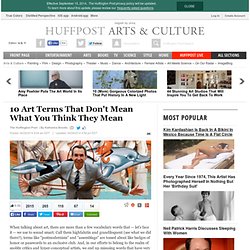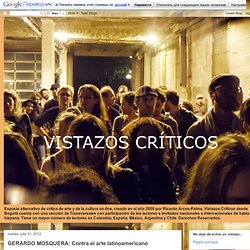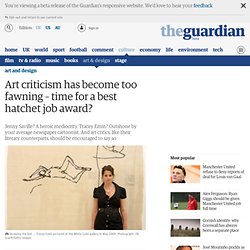

Facebook. Conversación. Portada del libro La crítica dialogada, Anna María Guasch, CENDEAC, Murcia, 2007.

Hay una referencia a este libro en los sites locales de arte contemporáneo. Hace siete años, Ricardo Arcos comentaba el evento Prácticas artísticas y crítica cultural en un post y de paso saludaba la llegada de María Sáez, como directora de Divulgación Cultural de la Universidad Nacional. A la bienvenida, Arcos añadía que ene se encuentro se lanzó la publicación en una charla sostenida por Santiago Rueda Fajardo y su autora. Además de esto y sin profundizar demasiado en su afirmación, consideraba que el documento era “bastante atrevido, por poner en un mismo espacio a teóricos tan disimiles como Danto y Foster”.
Luego, el libro desapareció. Más que “atrevido”, este libro resulta de interés por dar la razón a Arcos en su segundo argumento. Sirve mas si se lee como el cierre de una época. Como siempre, los efectos de este tipo de enfoques se sintieron con fuerza en el campo artístico colombiano. Murcia. 10 Art Terms That Don't Mean What You Think They Mean. When talking about art, there are more than a few vocabulary words that -- let's face it -- we use to sound smart.

Call them highfalutin and grandiloquent (see what we did there?) , terms like "postmodernism" and "assemblage" are tossed about like badges of honor or passwords to an exclusive club. And, in our efforts to belong to the realm of snobby critics and hyper-conceptual artists, we end up misusing words that have very real, definitive meanings.
So, in an effort to dispel any vocab rumors and equip our readers with a handy pocket guide to art jargon, we're playing "Define That Term! " here on HuffPost Arts and Culture. 1. Postmodernism is a word your artsiest of art friends throw around with gusto, toting Don DeLillo novels and Philip Glass records whilst quoting Foucault ad nauseam. So how does this translate to art? 2. Sometimes it's tempting to call anything vintage and ornamental "art deco. " 3. This may come as a surprise, but monochromatic does NOT mean black-and-white. 4. 5. GERARDO MOSQUERA: Contra el arte latinoamericano. Ricardo Arcos-Palma.

Contra el arte latinoamericano La entrevista al crítico y curador cubano Gerardo Mosquera realizada a través del correo electrónico, tiene como eje central abordar y discutir las especificidades del arte contemporáneo e instalar un debate en relación a lo “latinoamericano” hoy; reflexiones que se desprenden en el recorrido desde las categorías modernas de principios del siglo XX instaladas en el discurso crítico de América Latina hasta la resignificación actual del mainstream por incluir en sus relatos curatoriales el lugar de legitimación de las periferias. (1) Juan Pablo Pérez (2) Juan Pablo Pérez: ¿Existe un arte latinoamericano? ¿Cuáles serían las estrategias para pensar la identidad, la singularidad del lenguaje artístico y las categorías modernas como la “antropofagia”, que fueron asumidas en toda América Latina como forma de esgrimir una resistencia político-cultural no occidental?
JPP: A partir de un pasaje de tu texto “El Síndrome de Marco Polo. . (4) Mijail M. Art criticism has become too fawning – time for a best hatchet job award? The Hatchet Job of the Year prize rewards brutal book reviews.

The organisers have just announced their second shortlist, including nasty reviews of authors including Salman Rushdie and AN Wilson. This innovation in literary criticism is impressive – and should be imitated by the art world. Someone out there should offer an annual prize for the most lethal review of an art exhibition, because art reviews are getting way too polite. The sad death of Robert Hughes last year robbed art criticism in the English language of a courageous voice. Hughes was eloquent, honest, and did not care what artists, dealers and curators thought of him. Hughes wrote many of his most devastating essays in New York in the 1980s, when the city was enjoying a postmodern art boom and throwing up celebrity graffiti artists by the truckload. Since the 1990s, London has spawned the celebrity artists and claimed the title of cool art zeitgeist city.
To put it another way, the world is changing. Art criticism has become too fawning – time for a best hatchet job award?